On the occasion of the end of 2023, The Universe Space Tech editorial team has prepared for you a traditional selection of the most spectacular space and astronomy images published over the past twelve months. You can see meteors, comets, the Starship flight, the Moon’s south pole, an epic solar eclipse, and much, much more.
Star Jackpot
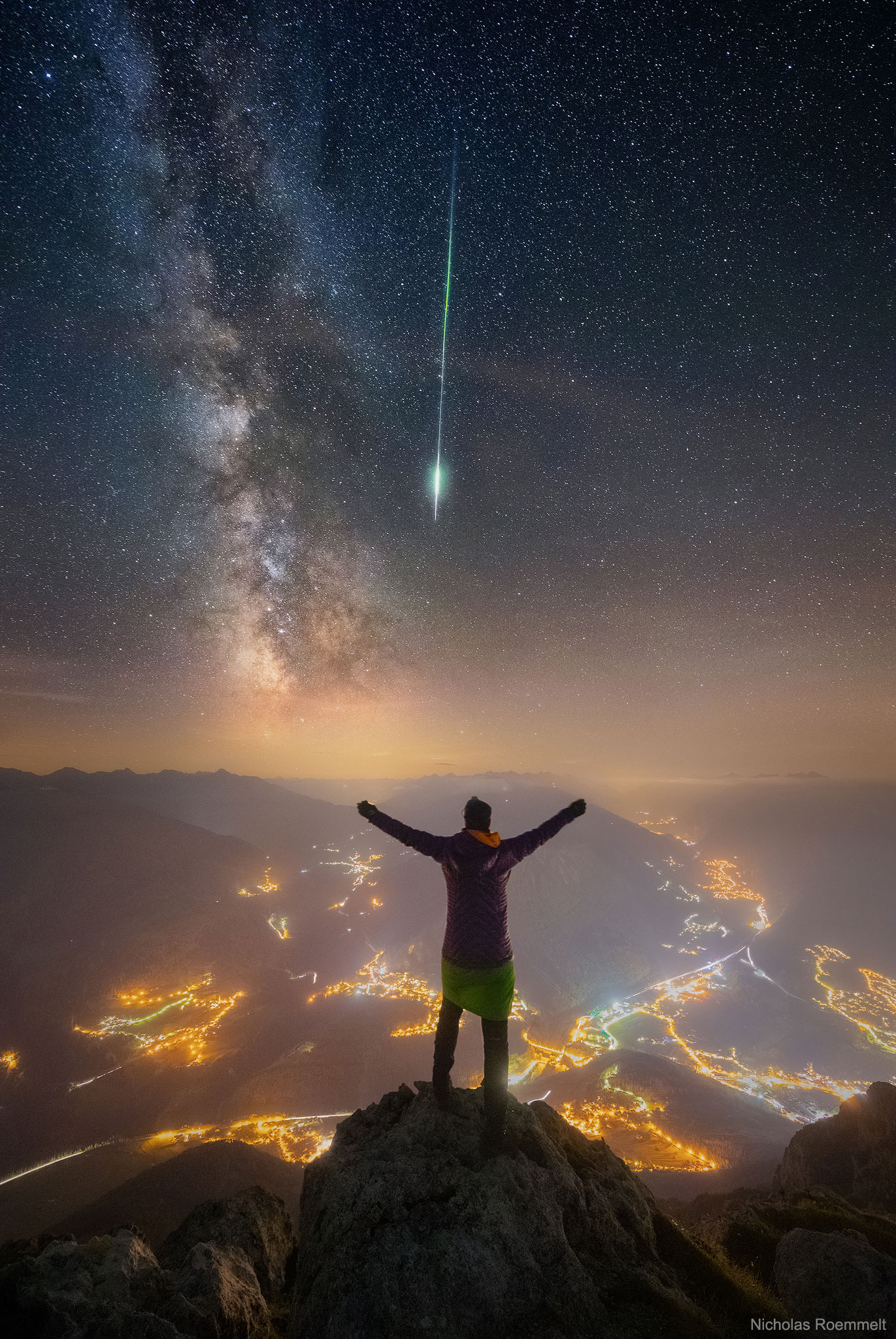
This stunning image was taken by Austrian astrophotographer Nicholas Roemmelt. He managed to capture the Perseid meteor shower, the Milky Way, and the Alps at the same time.
A giant prominence on the Sun
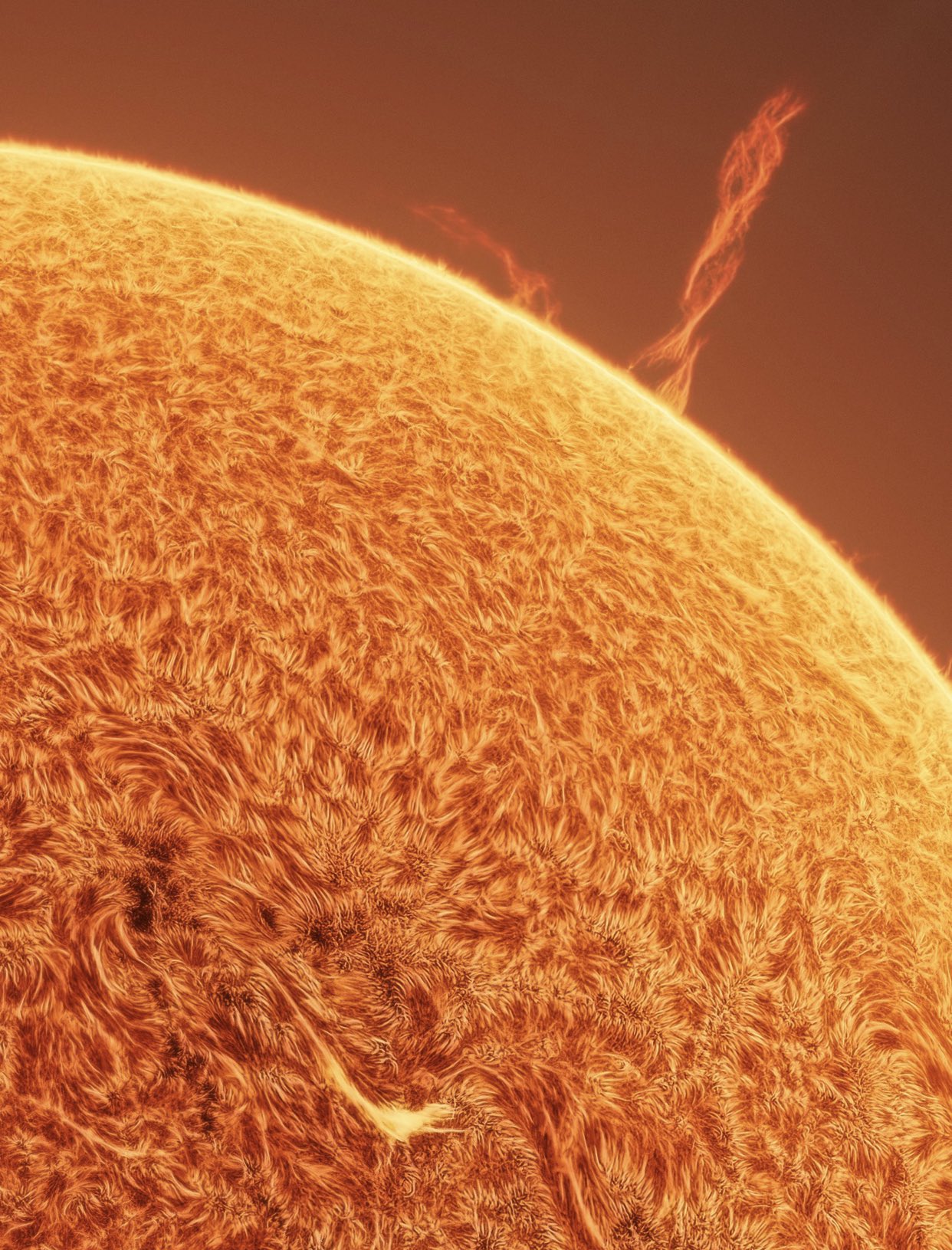
Famous astrophotographers Andrew McCarthy and Jason Guenzel joined forces to create an image of the Sun. The result of their collaboration is an epic 140-megapixel portrait of our star. It shows a giant prominence 120 thousand kilometres high. This is about ten times the diameter of our planet.
In the ring of fire

On 14 October, residents of North and South America witnessed a rare celestial phenomenon – an annular solar eclipse, also known as a ring of fire. One of the most spectacular photographs of this event was taken in Brazil by photographer Marcelo Maranha. It features Olympic champion Italo Ferreira. The preparation and precise calculation of the place and time for this photo session took several months.
Launch of a rocket printed on a printer
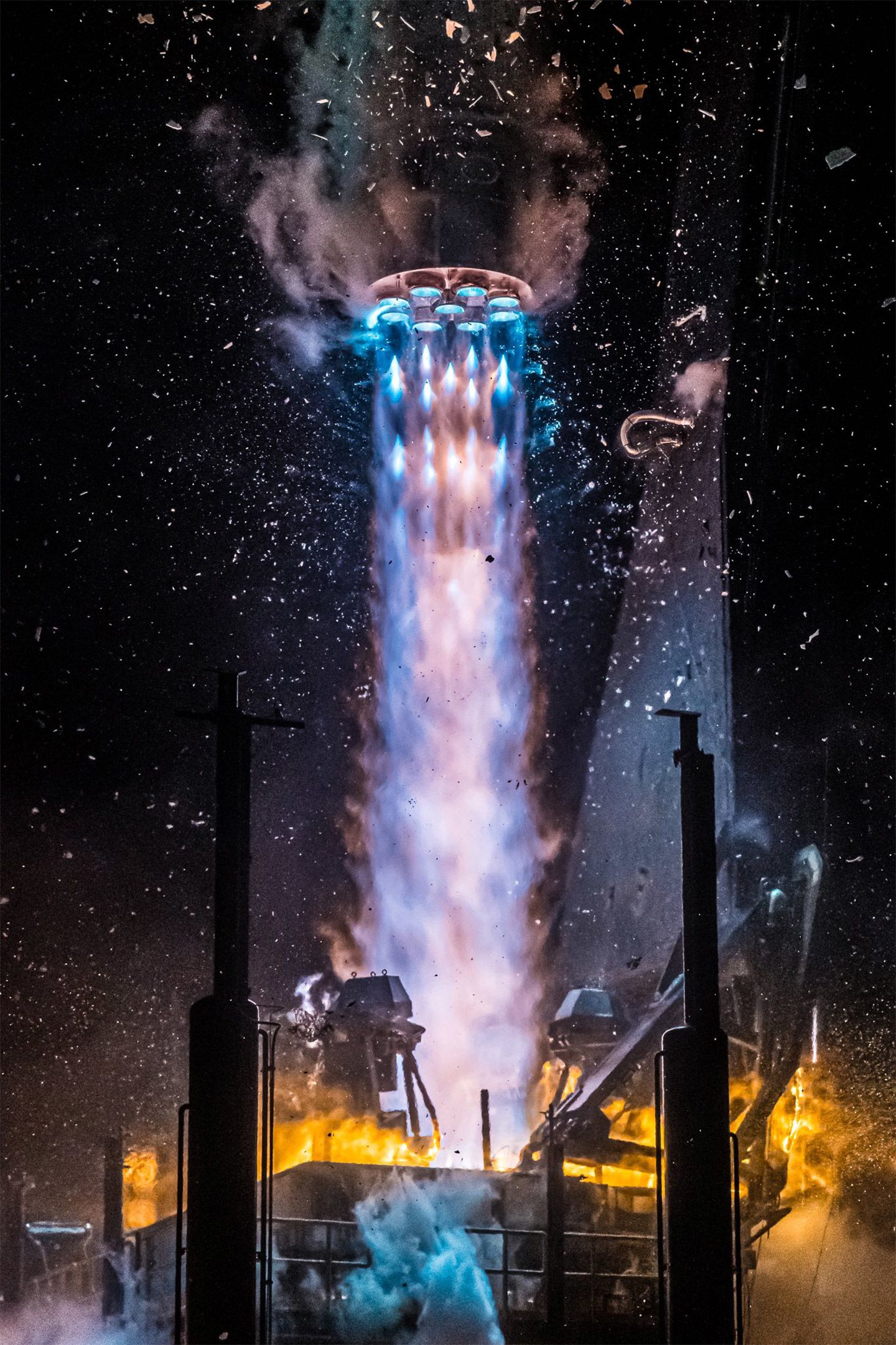
This image shows the launch of the Terran 1 rocket on 22 March. Its main feature is that 85% of the components were printed using a 3D printer. And the unusual purple-blue colour of the flame is due to the fact that Terran 1 used methane as a fuel. Unfortunately, the rocket never managed to enter orbit, which, however, does not negate the beauty of the image.
Moonrise over the Very Large Telescope
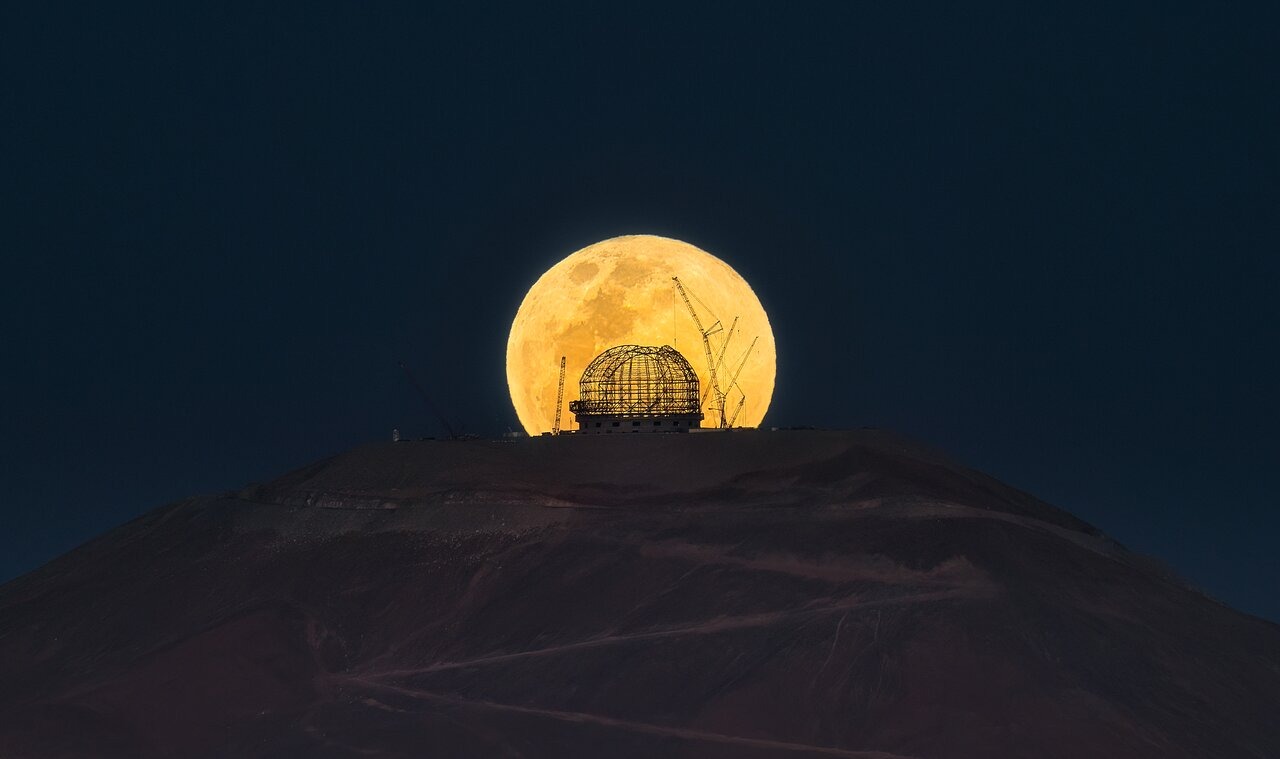
Moonrise over the ESO’s Extra Large Telescope construction site. Once commissioned, it will be the most powerful optical observatory on Earth. The image shows the 80-metre dome under construction, which will house the telescope’s main mirror.
Doomed Phobos
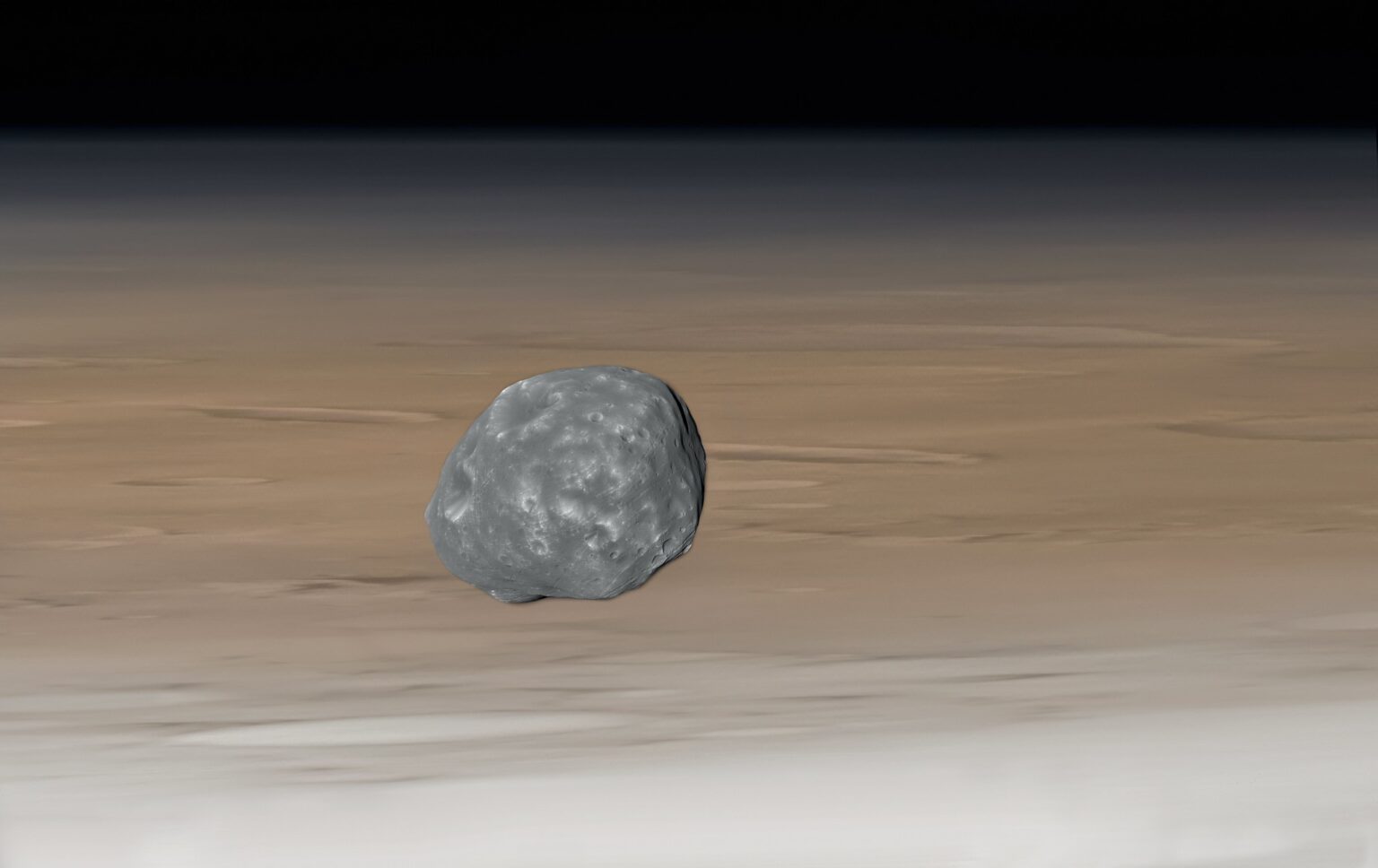
An image of Phobos taken by the Mars Express mission and processed by British astrophotographer Andrea Luck. In about 30 million years, this small moon will come so close to Mars that it will be torn apart by its gravity.
Solar eclipse: view from the Moon
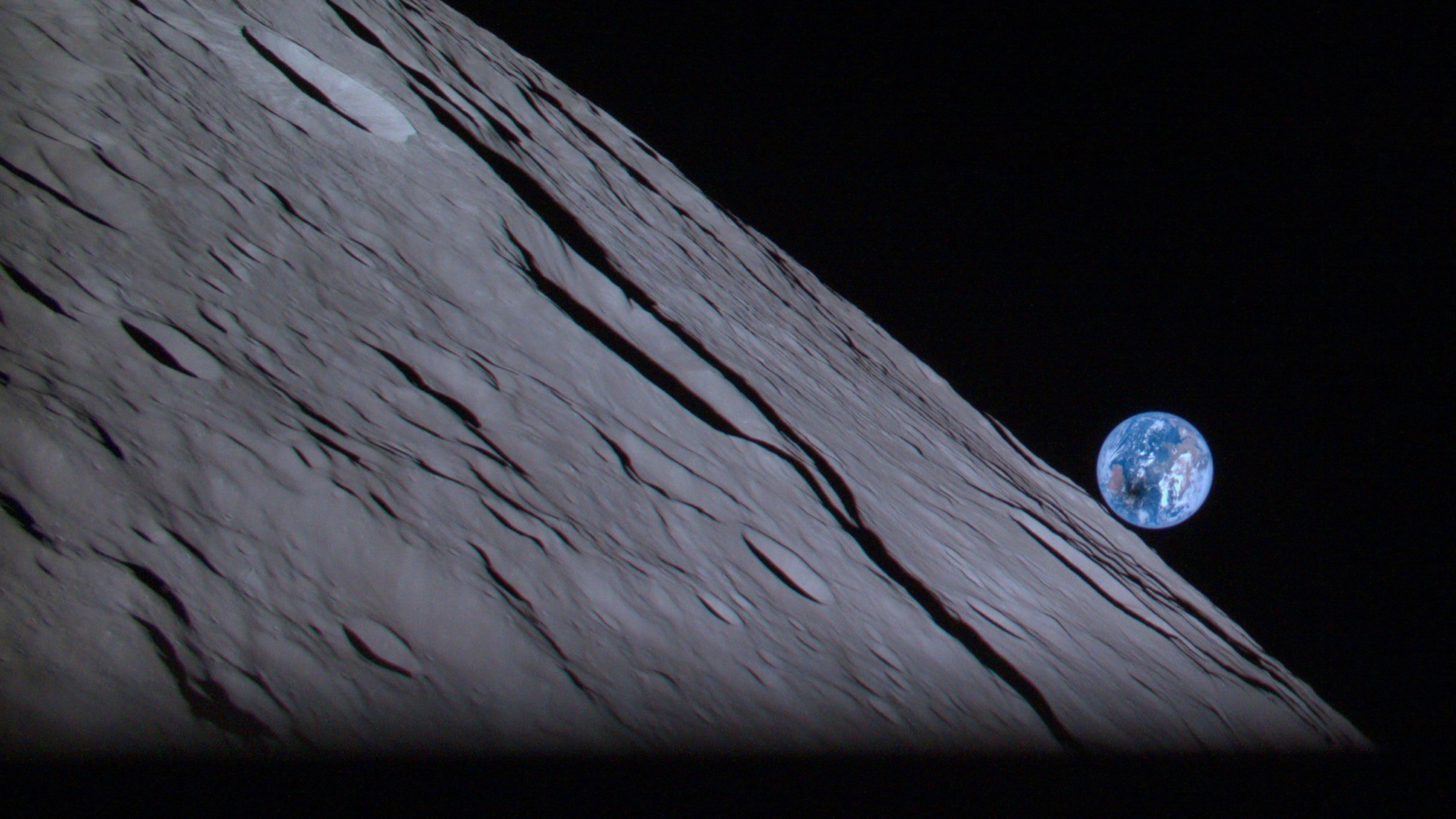
On 20 April, a hybrid solar eclipse was observed on Earth. It was captured by Japan’s Hakuto-R probe, which was preparing to land on the Moon at the time. The image shows a clearly visible lunar shadow on the globe.
Nishimura comet
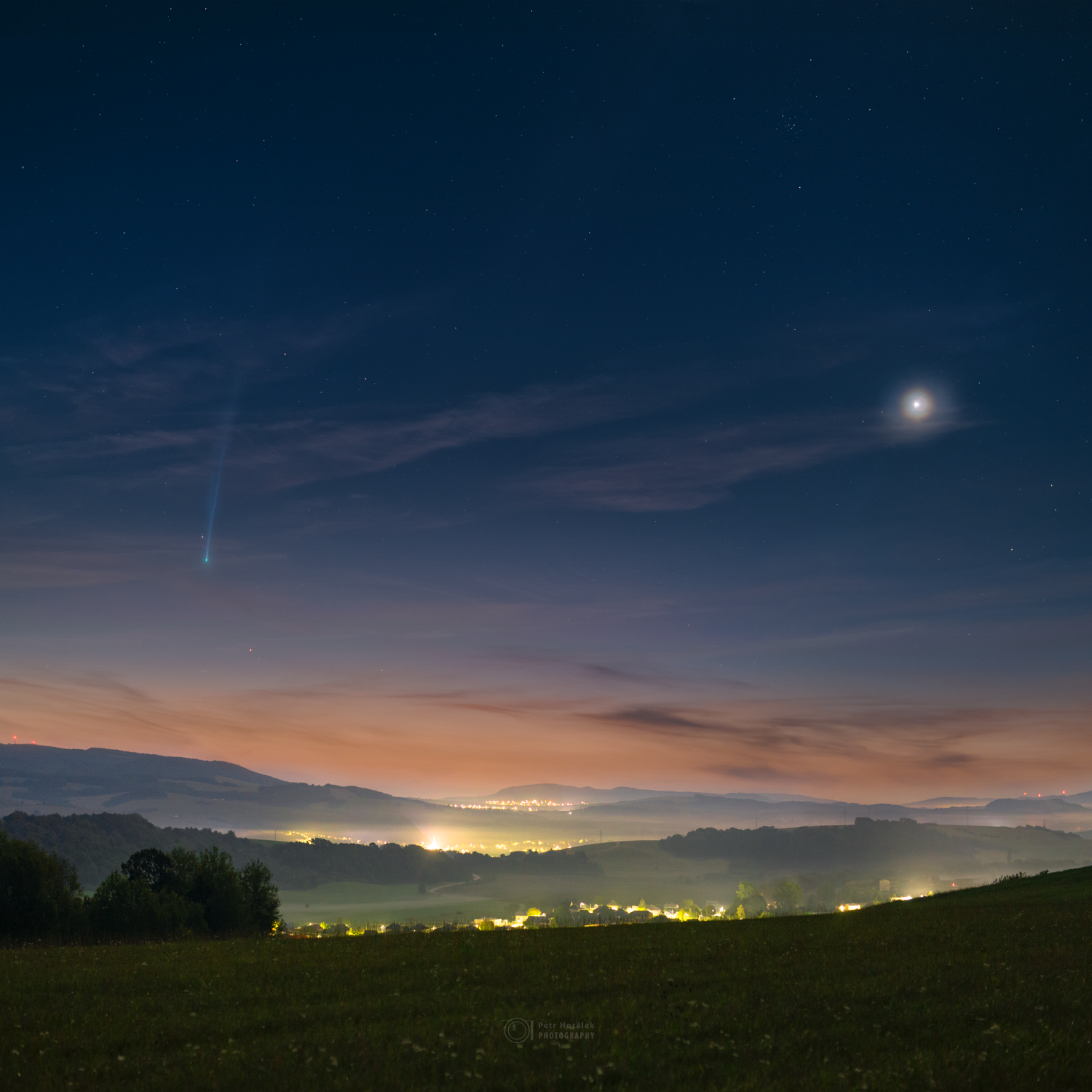
In September 2023, the Earth’s sky was adorned by Nishimura comet for several weeks. One of the most spectacular images of its visit was taken by Czech astrophotographer Petr Horalek. He captured the tailed guest in the sky over Slovakia.
A bear on Mars
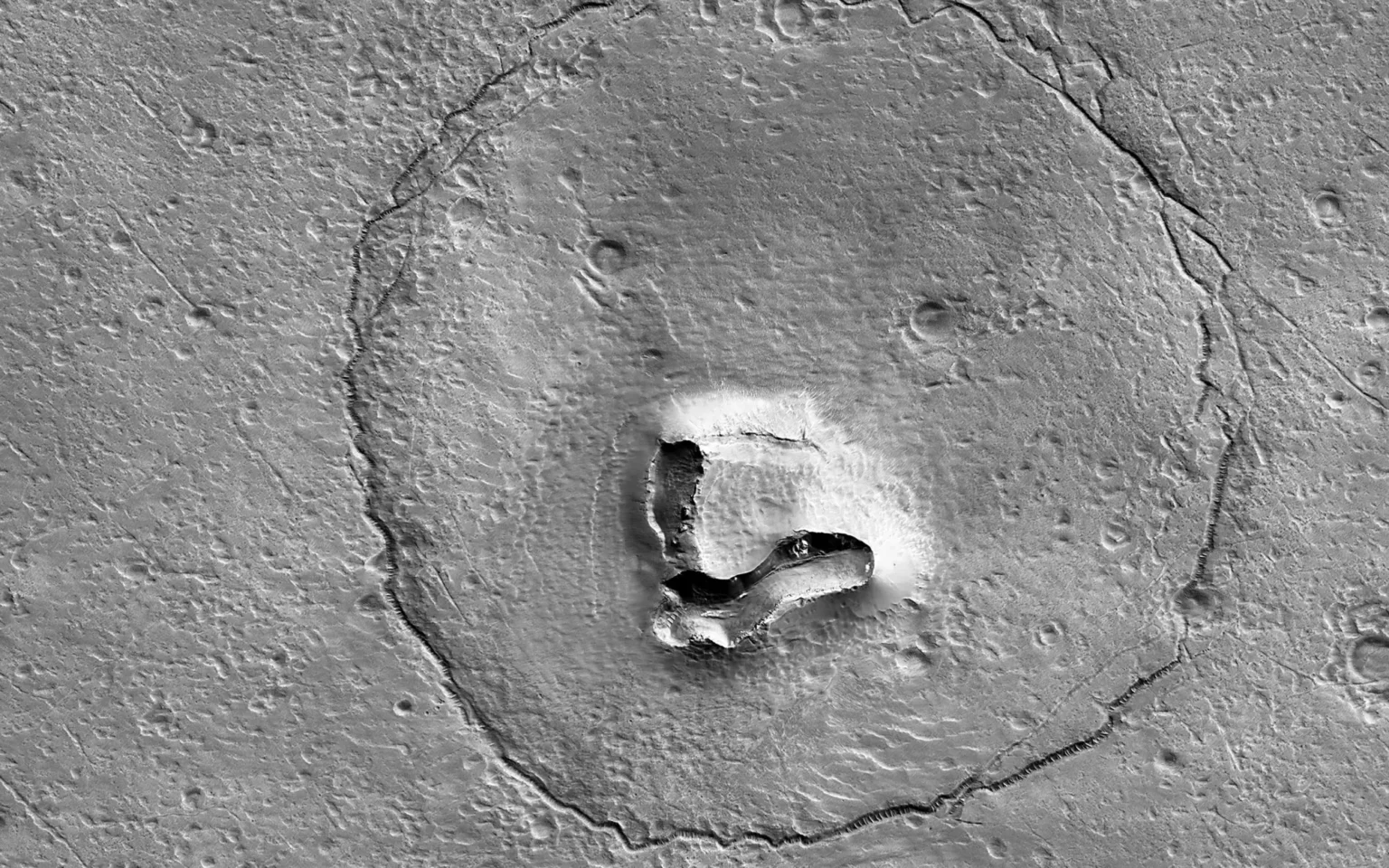
An unusual geological formation on Mars that resembles a bear’s head. The image was taken by the MRO mission.
Unexpected Andromeda
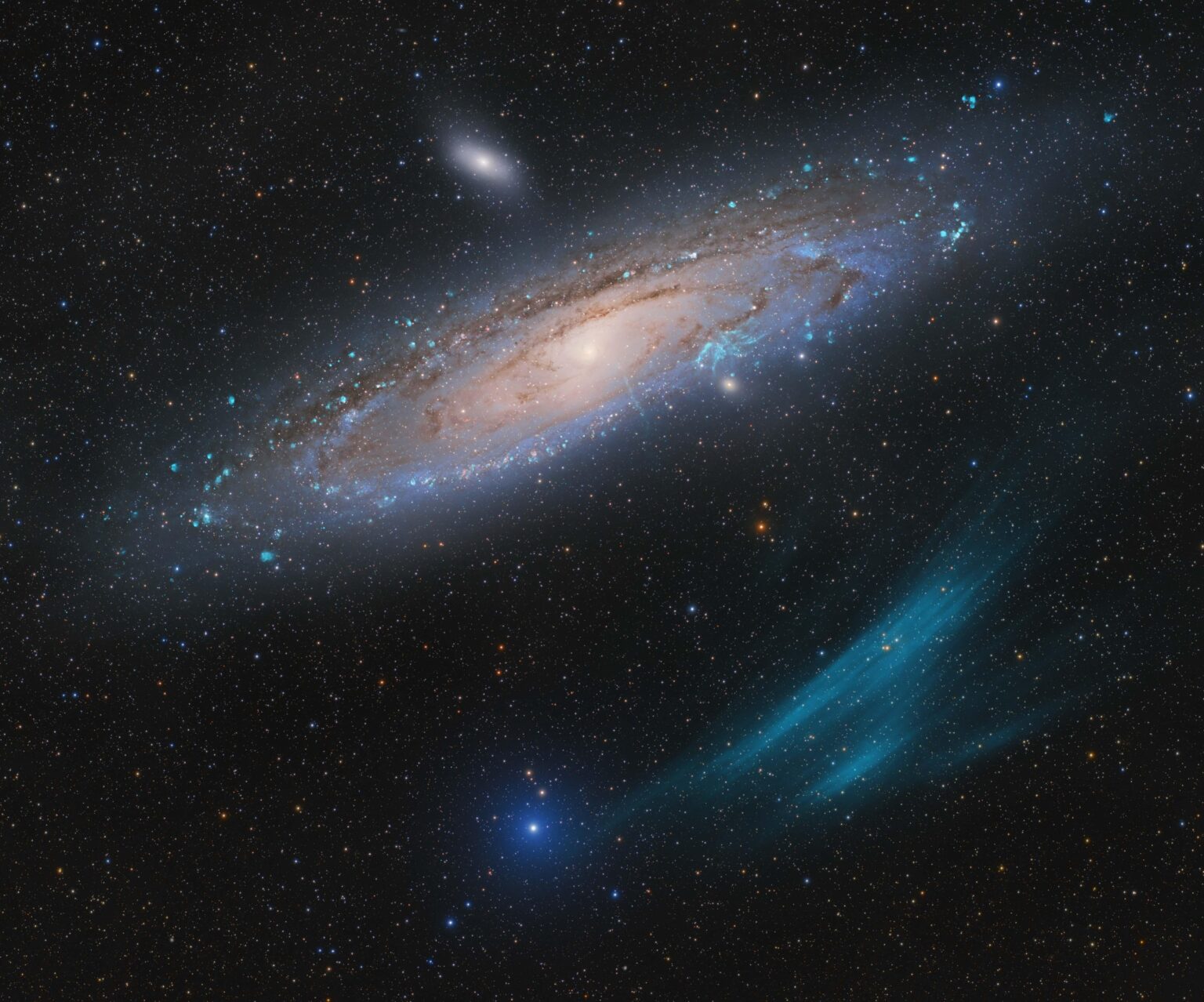
This image won the annual prestigious Astronomy Photographer of the Year competition. It depicts the Andromeda galaxy. Next to it, a huge blue plasma arc is visible, the existence of which was not previously known to astronomers.
The Crab Nebula
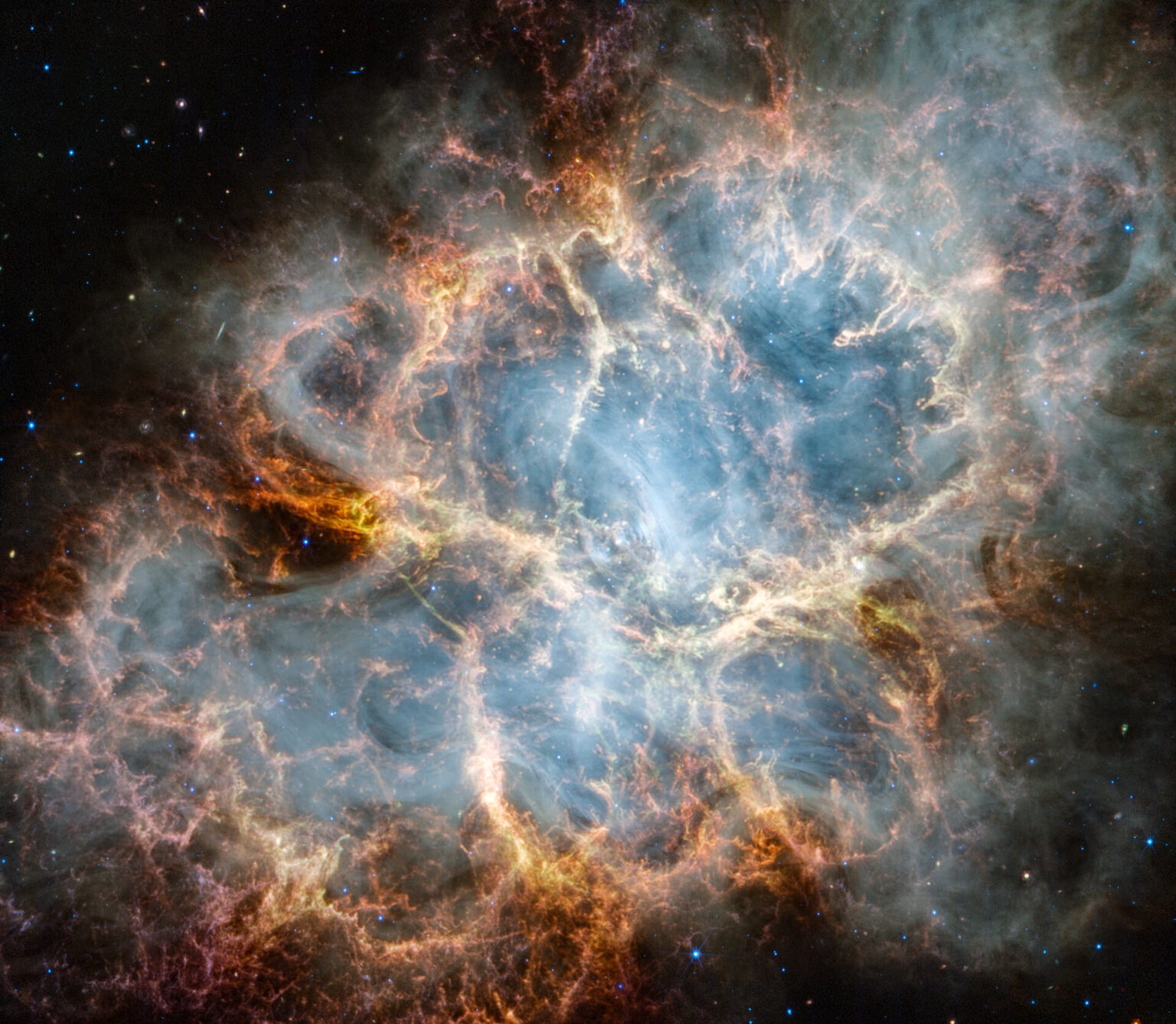
An image of the Crab Nebula taken by the James Webb Space Telescope. This is the remnant of the famous supernova that flashed across the Earth’s sky in 1054.
The heart of a dead star
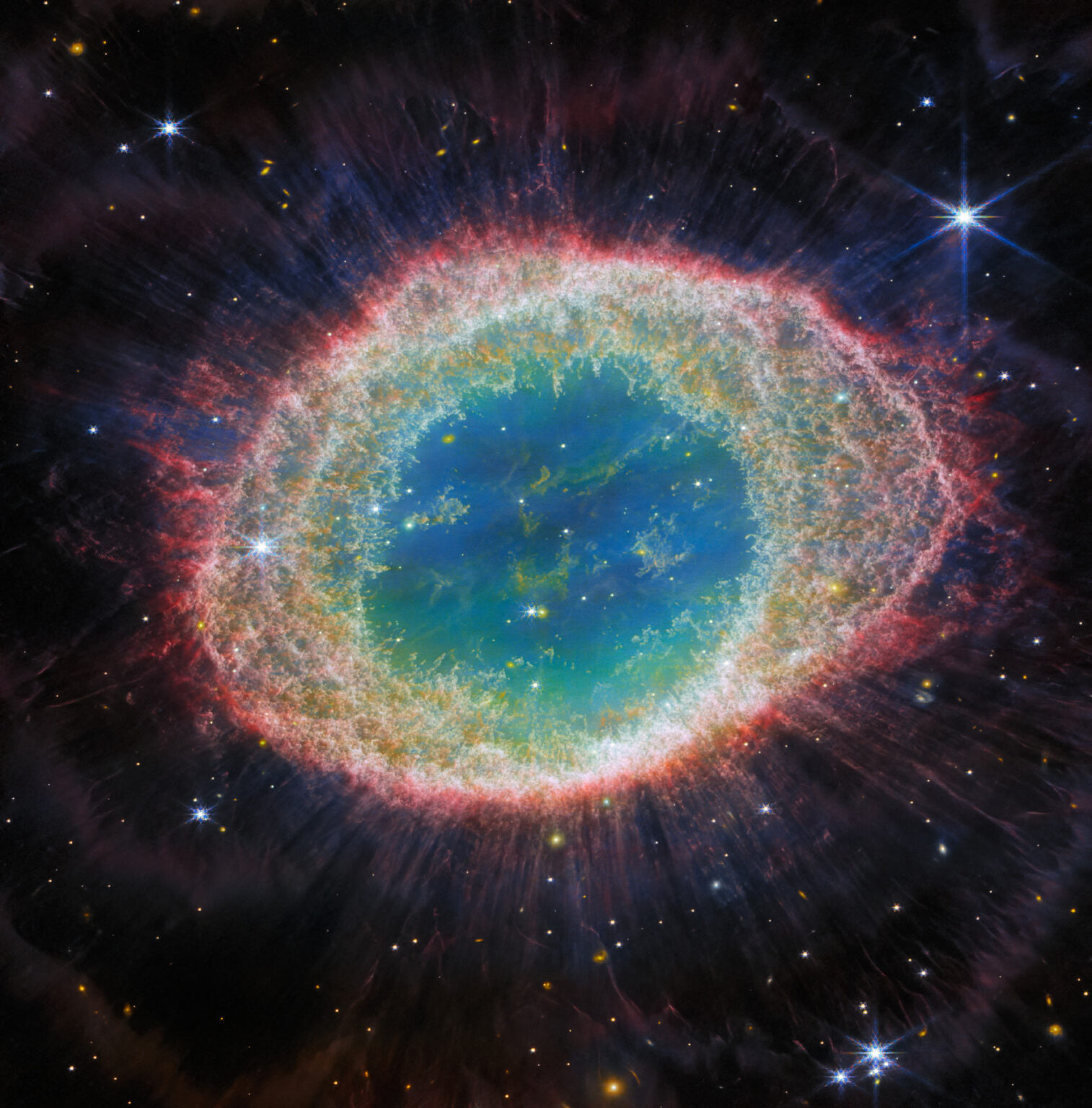
The Ring Nebula as seen by the James Webb Telescope. It was formed as a result of the shedding of the outer layers by a red giant that in the distant past resembled our Sun.
Autumn colors of the Soul Nebula
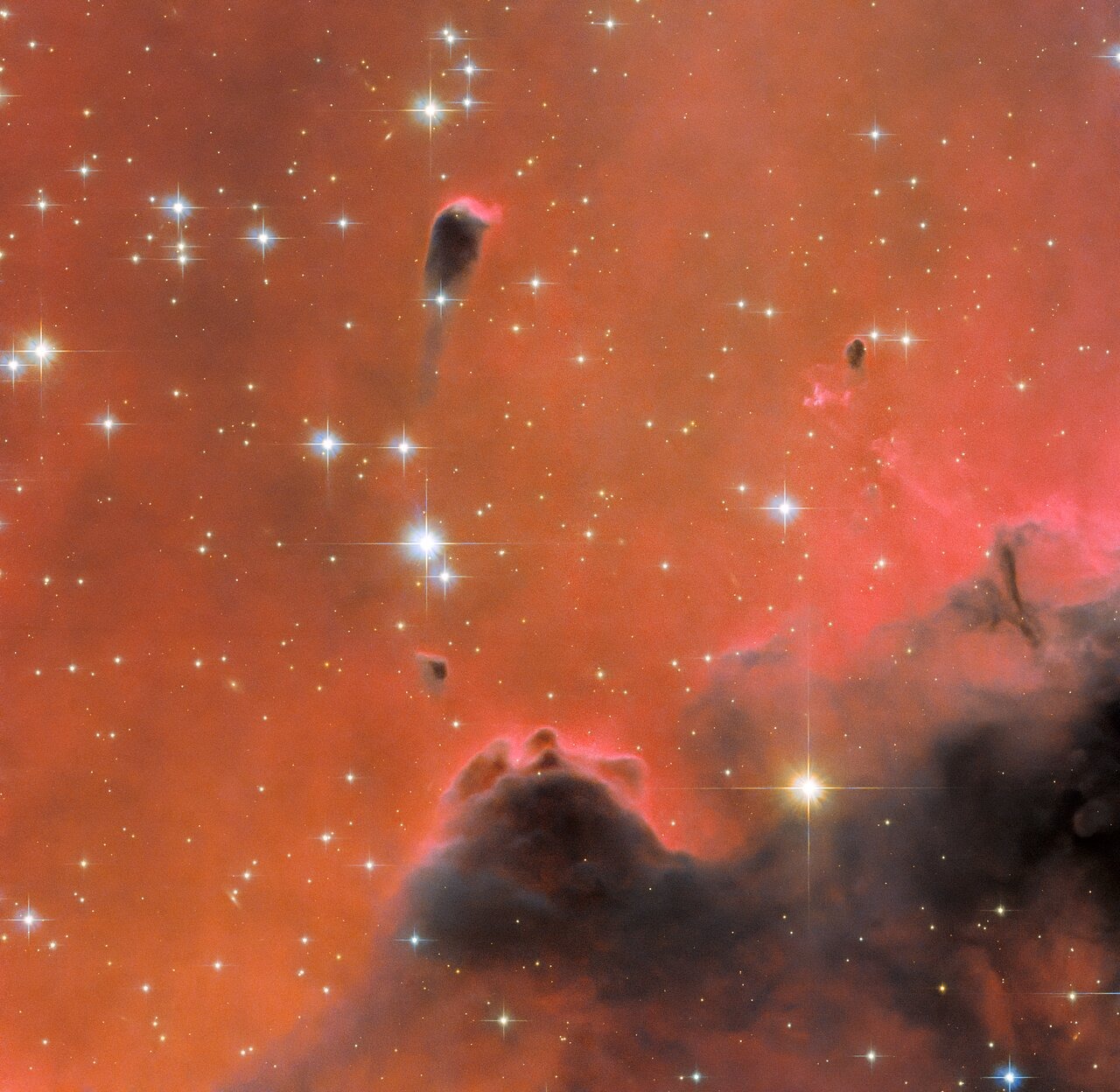
The Westerhout 5 emission nebula, also known as the Soul Nebula. The Hubble telescope’s brilliant image, flooded with bright red light, shows many interesting objects, including a free-floating and evaporating gas globule (frEGG). It is a small, dark, tadpole-shaped area in the upper left center. In the future, it may give rise to a new star system.
On top of Super Heavy
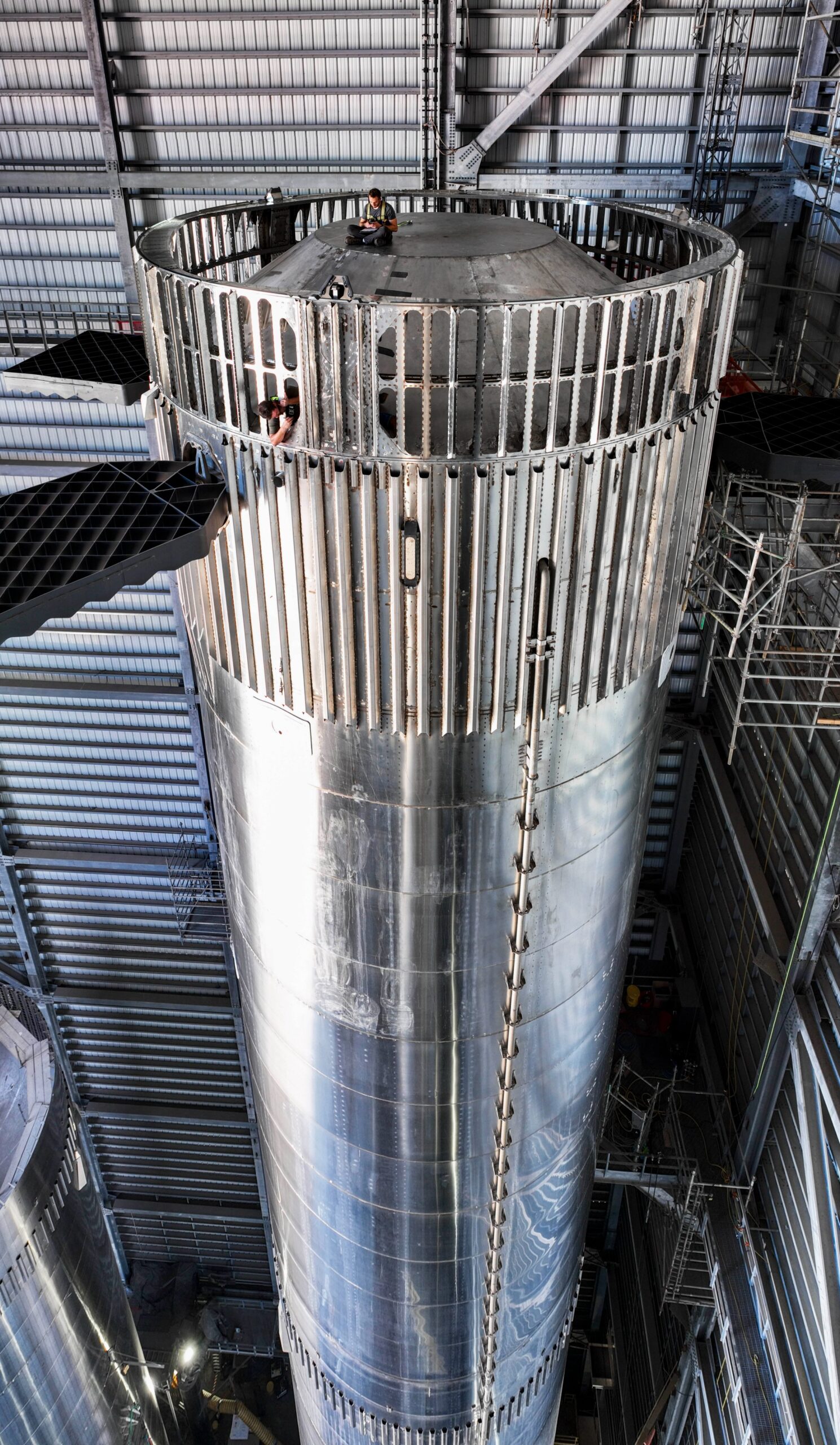
Preparing the Super Heavy booster for an upcoming flight. The man on top gives an idea of the size of the stage and the hangar where it is being assembled.
Starship takeoff
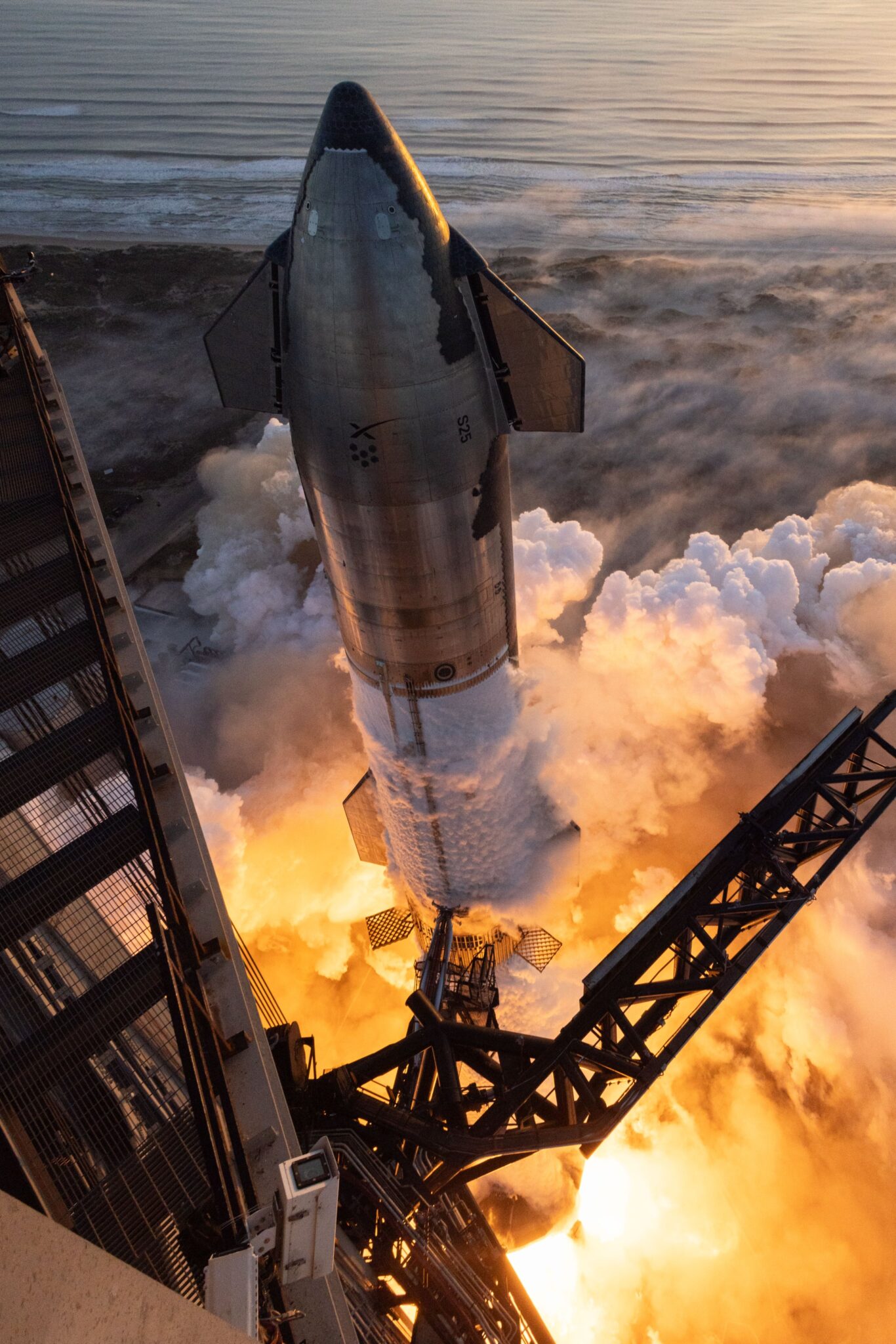
One of the main events of 2023 was the orbital testing of the Starship super-heavy space system. This image was taken during its second flight, which took place on November 17, 2023.
33 Raptor engines
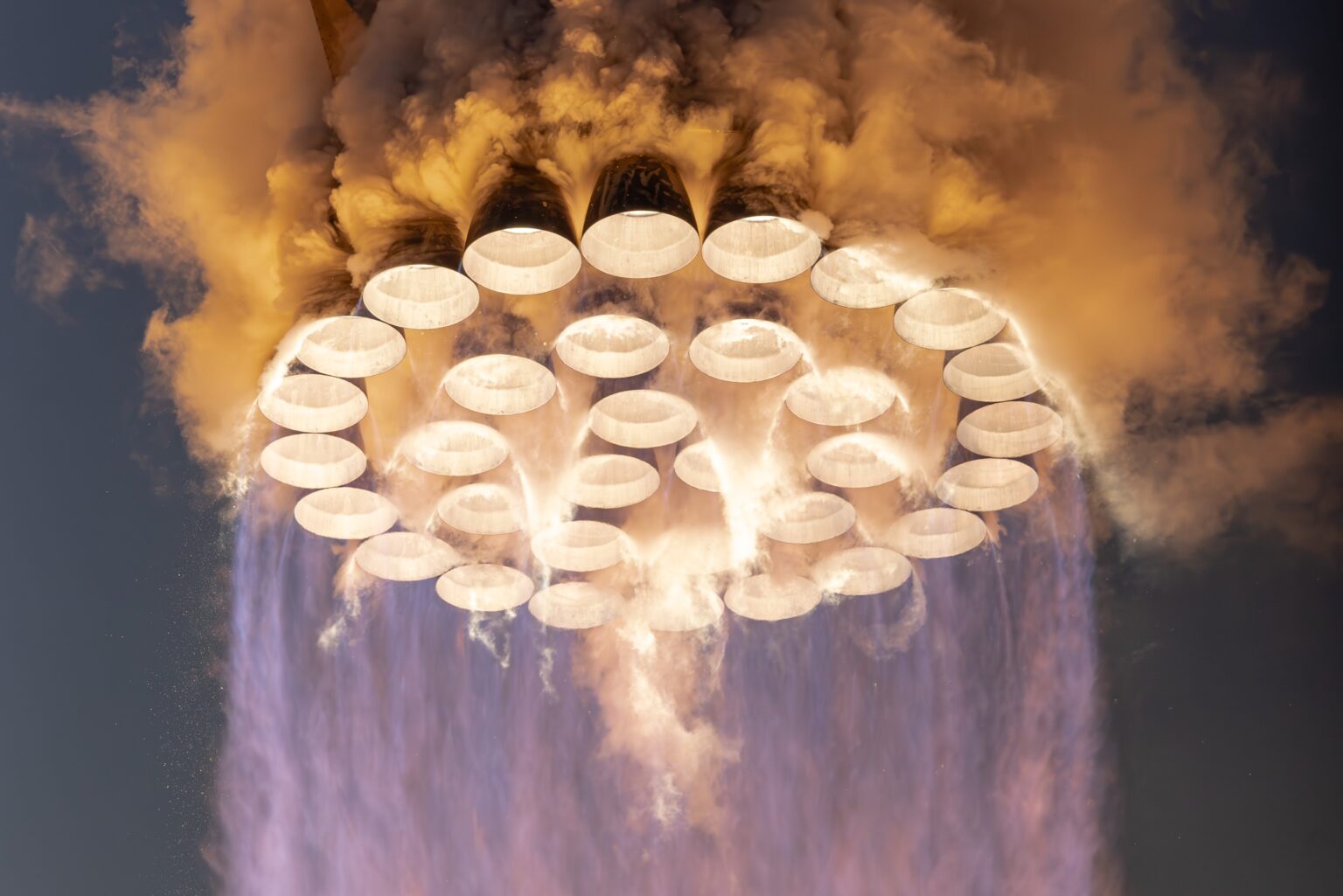
Another image from the second Starship flight. It demonstrates the simultaneous operation of 33 Raptor engines on the Super Heavy accelerator. No other rocket in history has ever had so many power units.
The “first light” of the Euclid telescope
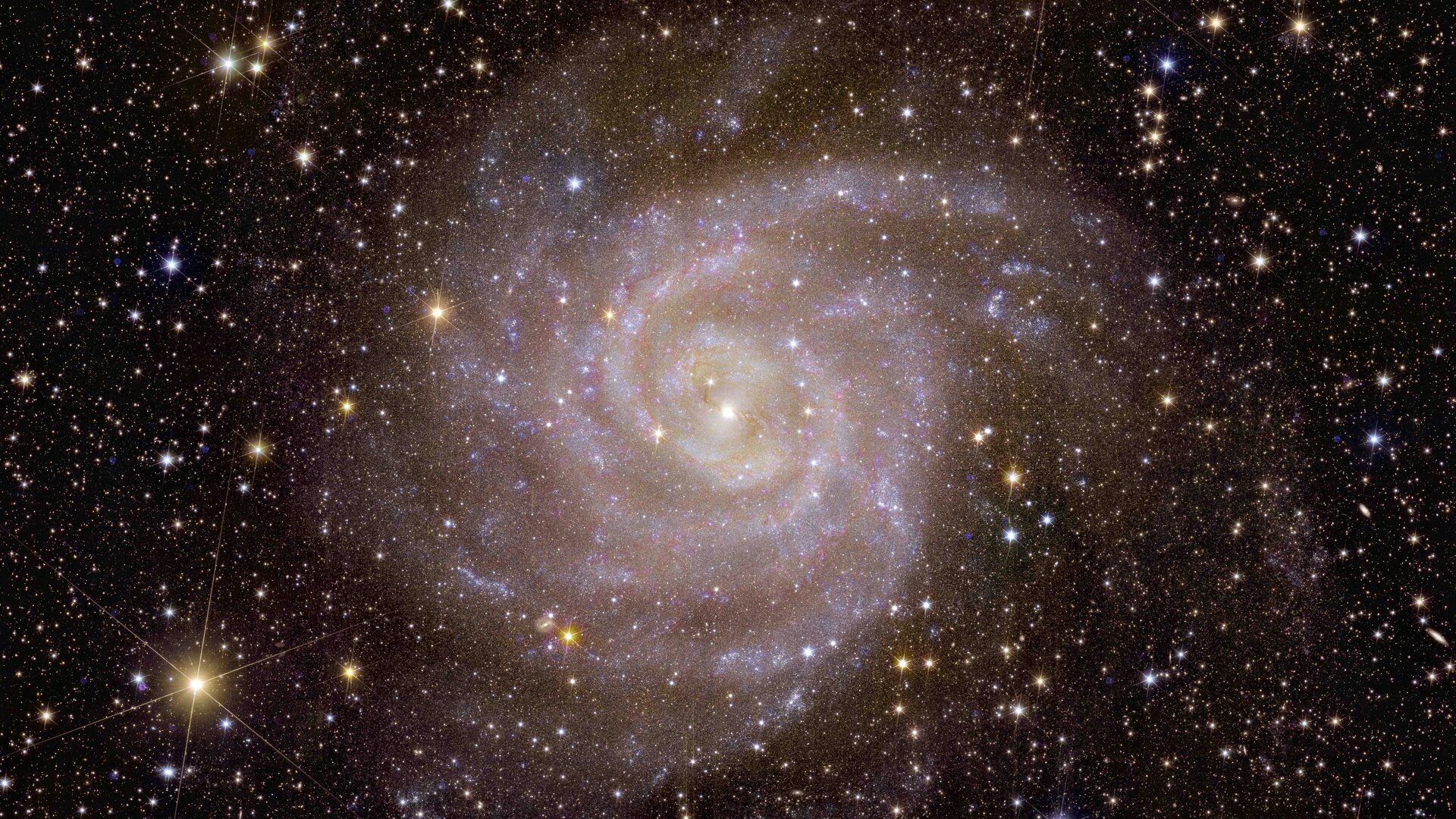
In 2023, ESA launched the Euclid Space Telescope, which will study the history of the evolution of the Universe. The device has already transmitted its first images to Earth. The most spectacular of them shows the spiral galaxy IC 342. It is located at a distance of 11 million light years from the Earth.
Collision of distant galaxies
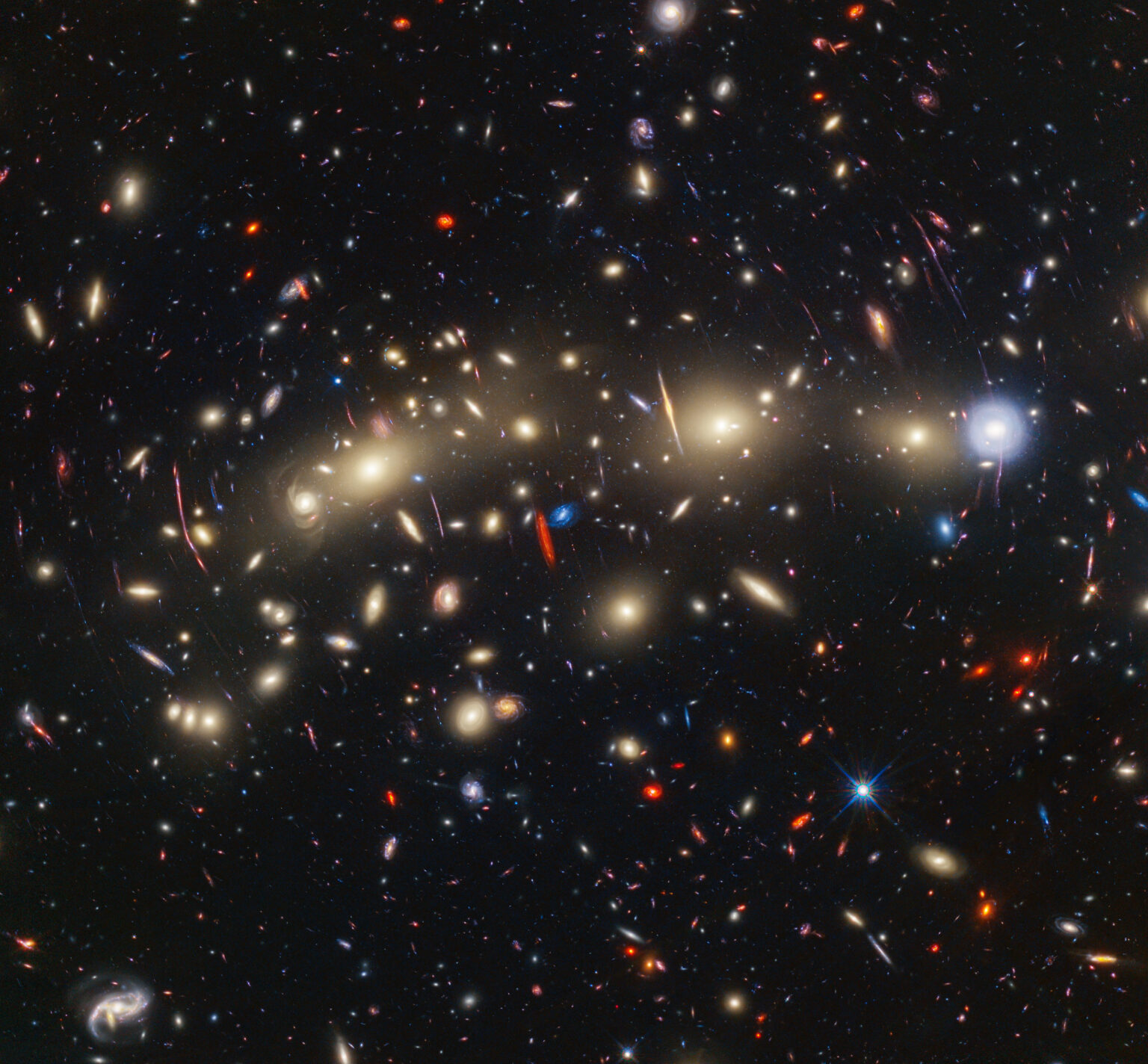
This is one of the most detailed images of the Universe in history. It was obtained by combining data collected in the visible and infrared by the Hubble and James Webb telescopes. The photo demonstrates the process of collision between two galaxy clusters located at a distance of 4.3 billion km from the Earth.
In the shadow of the Moon
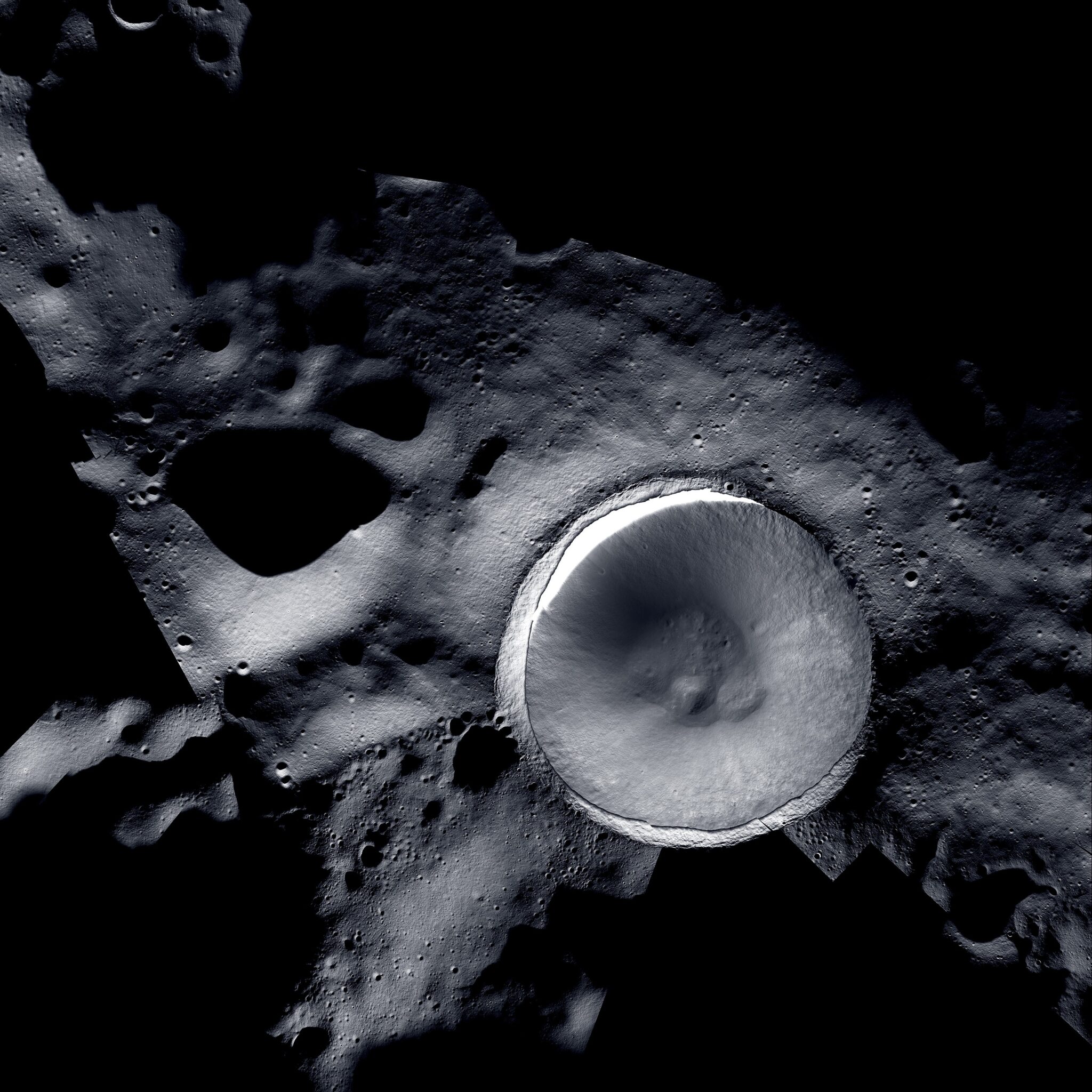
This unique image was obtained by combining images from the LRO and the South Korean Danuri probe. The latter is equipped with the ShadowCam camera, designed to capture images of perpetually shadowed polar craters. It made it possible to see for the first time in history what the Moon’s south pole hides.
Asteroid Dinkinesh and its satellite
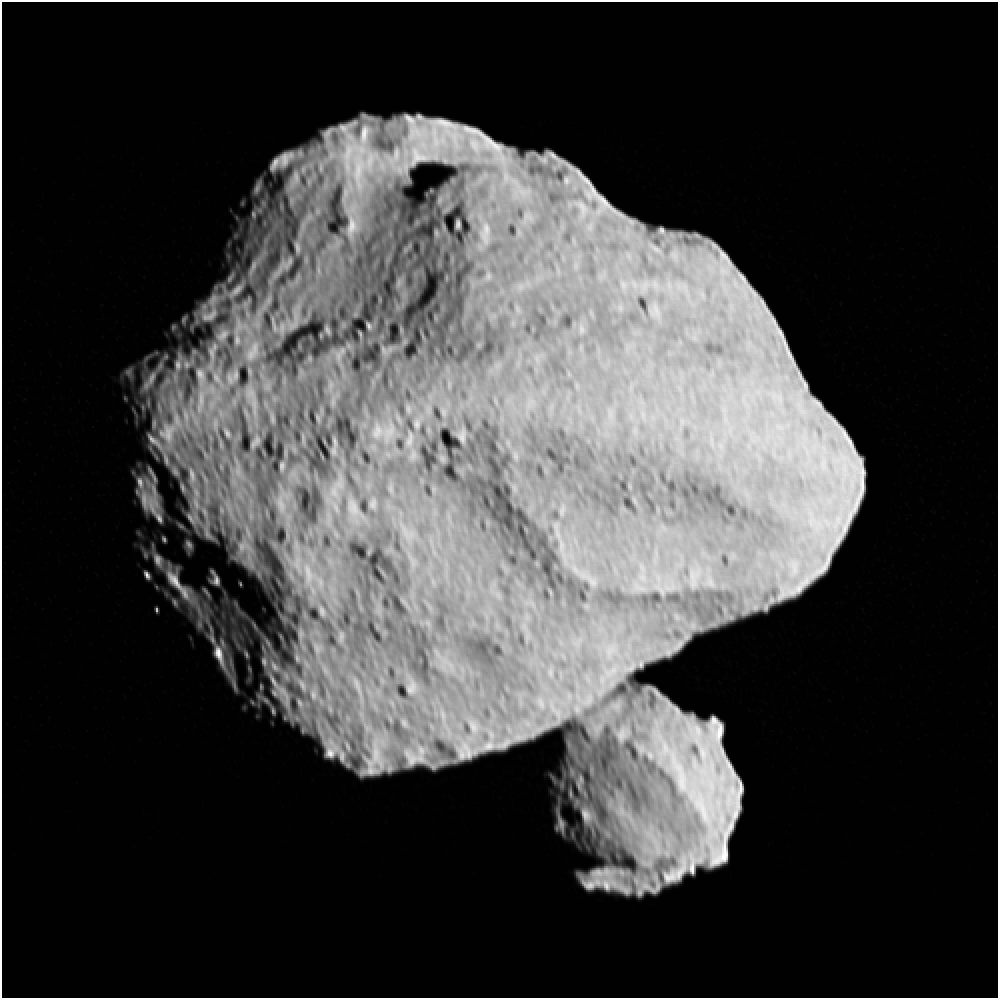
On November 1, the Lucy probe made a flyby of the asteroid Dinkinesh. The visit was a surprise. After studying the images taken by the probe, scientists found out that Dinkinesh has a satellite.
A stellar maternity hospital
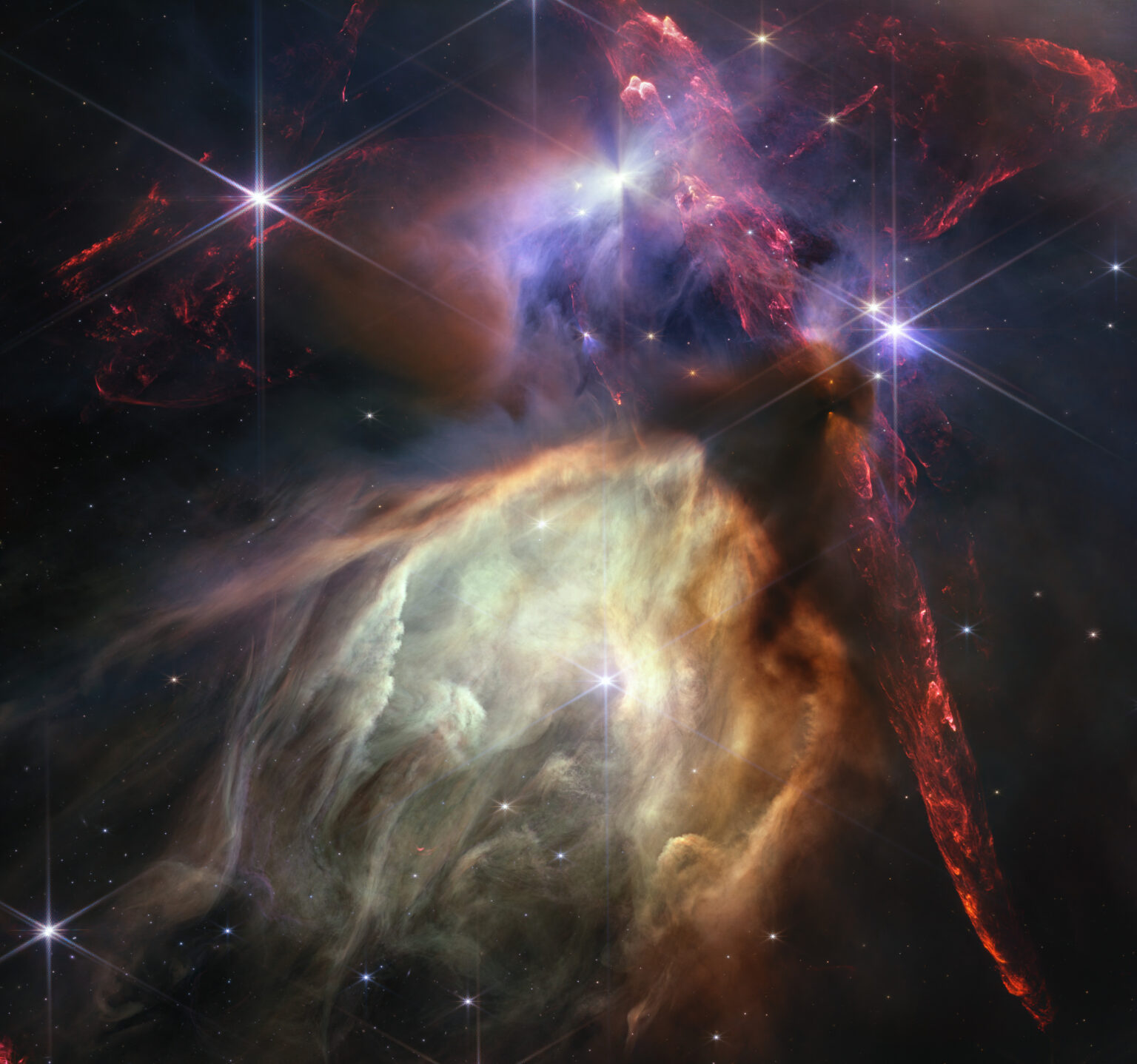
The molecular cloud of Rho in the Ophiuchus constellation. It is located at a distance of 390 light years from Earth and is a dark nebula inside which new stars are being born right now. The image was taken in honor of the first anniversary of the James Webb Space Telescope.
Earth’s sunrise
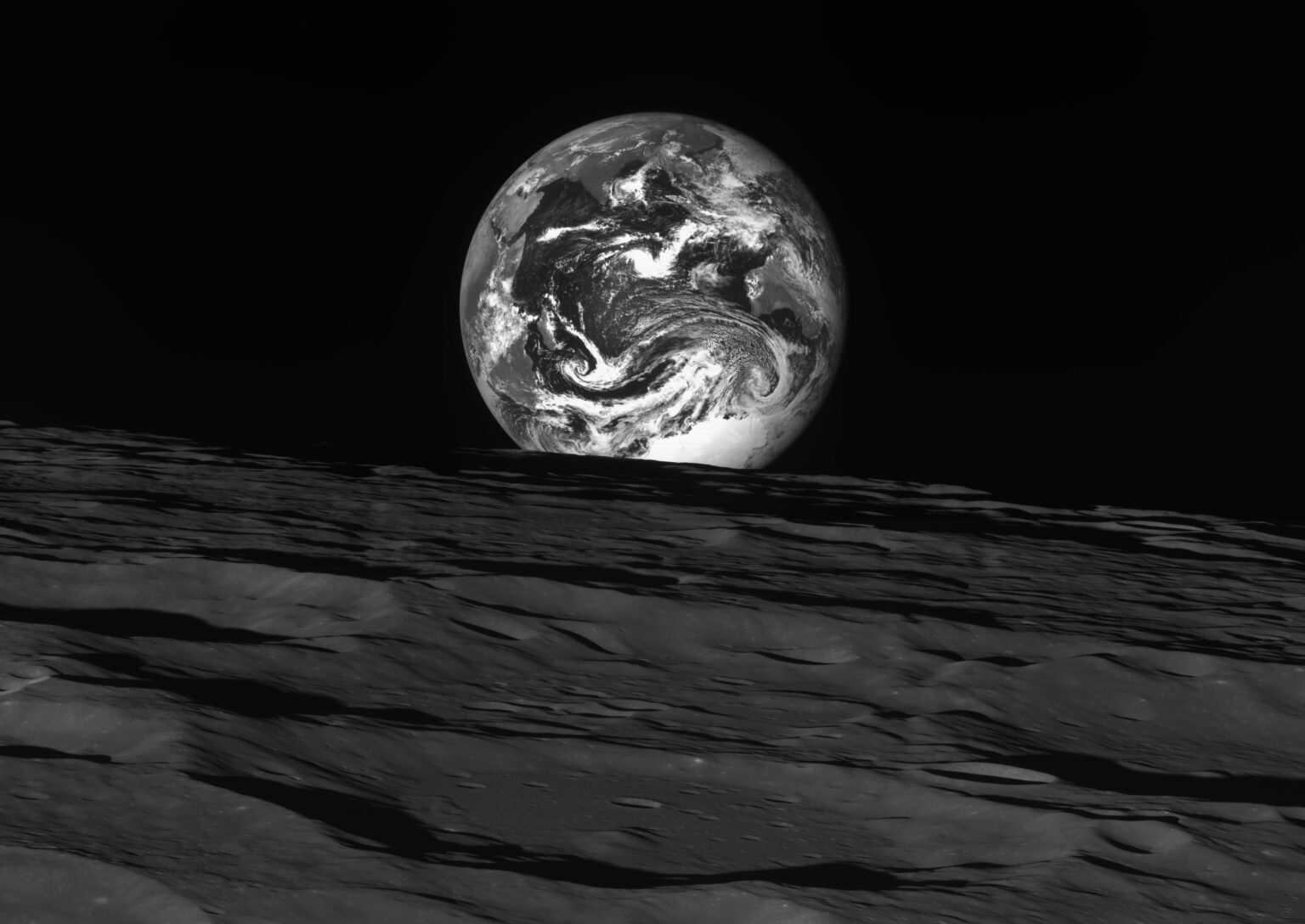
In early January 2023, the South Korean Danuri probe entered orbit around the Moon. Shortly afterward, it sent back an amazing image showing our planet rising above the lunar surface.
Anatomy of a dead star
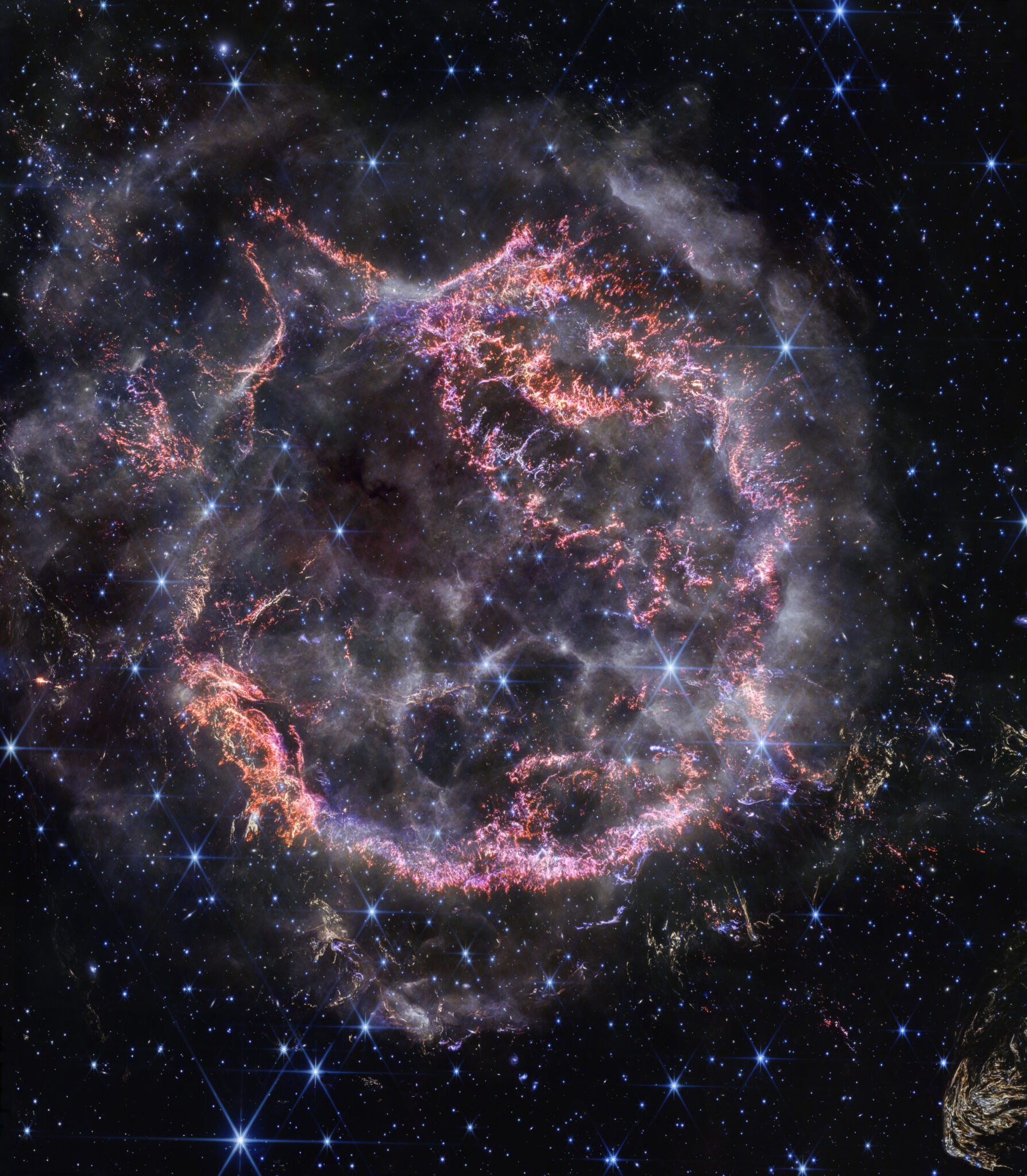
This image by the James Webb telescope shows Cassiopeia A: one of the most famous and closest supernova remnants to Earth. Its diameter is about 10 light years and it is still expanding at a speed of 4-6 thousand km/s.

